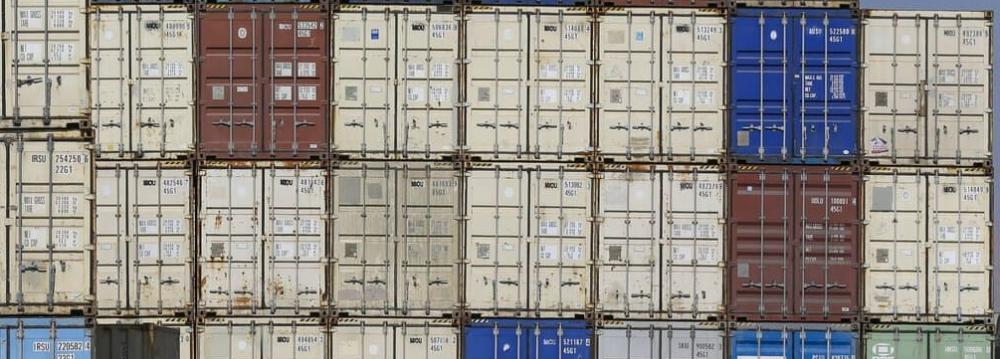Iran traded $24 billion worth of goods with P5+1 countries during the last fiscal year (March 2020-21), according to the spokesperson of the Islamic Republic of Iran Customs Administration.
“Iran’s exports to these six countries stood at $9.83 billion. China with 26.95 million tons worth $9 billion was Iran’s biggest export destination among the member states. The country accounted for 96% and 92% of the weight and value of the total exports respectively,” Rouhollah Latifi was quoted as saying by Mehr News Agency.
The exports, the official added, registered a 23% drop in tonnage and a meager 0.005% rise in value compared with the fiscal 2017-18, the year before the US pulled out of the Joint Comprehensive Plan of Action, the formal name of Iran’s nuclear deal with P5+1.
“Russia, with more than 1 million tons worth $504.57 million, came next accounting for 3.7% and 5.1% of the weight and value of exports respectively. The figures show a 100% rise in volume and a 72.5% growth in value compared with the fiscal 2017-18,” he said.
It was followed by Germany with 39,197 tons worth $233.06 million, the UK with 7,293 tons worth 13 million, France with 2,911 tons worth $8.76 million and the US with 66 tons worth $136,539, registering a respective decline of $127 million, $36 million, $30 million and $132.18 million.
The IRICA spokesperson noted that imports from P5+1 stood at 10.54 million tons worth $14.16 billion in the fiscal 2020-21.
“Although the import tonnage shows a 12% rise, since imports were redirected to contain essential goods and production raw material over the period and purchases of ‘luxurious’ products were banned, the value of imports registered a 29% fall compared with the fiscal 2017-18,” he said.
China with 3.56 million tons worth $9.84 billion topped the list of exporters to Iran, accounting for 33.7% of the total import value, and was followed by Germany with close to 1.26 million tons worth $1.85 billion (13%), Russia with 2.93 million worth $1.07 billion, the UK with 2.76 million tons worth $1.03 billion (7.3%), France with 12,390 tons worth $284.28 million (2%) and the US with 15,945 tons worth nearly $79.92 million (0.5%).
The value of imports from China, Germany, the UK, France and the US showed a 26%, 40%, 7%, 84% and 53% decline while those to Russia registered a 47% growth.
The P5+1 refers to the UN Security Council's five permanent members, namely China, France, Russia, the United Kingdom and the United States, plus Germany. It is a group of six world powers which, in 2006, joined together in diplomatic efforts to reach a nuclear deal with Iran.
JCPOA was reached in 2015, based on which Tehran agreed to roll back parts of its nuclear weapons program in exchange for the removal of economic sanctions.
In May 2020, the US administration led by Donald Trump unilaterally abandoned the agreement and reimposed sanctions on Tehran that scaled back its compliance in response.
However, JCPOA’s Joint Commission started meetings in the Austrian capital on April 6, aiming to get the US to return to the deal and Iran to resume compliance with it.
Iran’s total foreign non-oil trade stood at 145.7 million tons worth $73 billion in the last fiscal year (March 2020-21).
According to Mehdi Mirashrafi, the head of Islamic Republic of Iran Customs Administration, exports accounted for 112 million tons worth $34.52 billion and imports constituted 34.4 million tons worth $38.5 billion of the sum.
Iran’s main exports included gasoline, natural gas, polyethylene, propane, and pistachio, with the latter alone earning $1.2 billion.
“The main export destinations were China with 26.6 million tons worth $8.9 billion of imports from Iran, Iraq with 25.6 million tons worth $7.3 billion, the UAE with 15.2 million tons worth $4.6 billion, Turkey with 6.3 million tons worth $2.5 billion and Afghanistan with 7 million tons worth $2.2 billion. These five countries imported more than 80 million tons of non-oil goods worth $25.7 billion,” he was quoted as saying by Mehr News Agency.
China, Iran’s biggest trading partner, accounted for 26% of Iran's total non-oil exports, as 26.58 million tons of non-oil goods worth $8.95 billion were shipped from Iran to China during the period. Pistachio, nuts, minerals, construction materials, methanol, carpet, iron ore, glassware and fruits were the main types of goods exported from Iran to China in the last fiscal year.
Imports from China totaled 3.54 million tons worth $9.76 billion during the year to March 21, 2021, to account for 10.6% of the total volume of Iran's imports and 25.3% of the total value of imports during the period. Industrial machinery and raw materials, medical equipment, paper, wood, textile, auto parts and sports equipment were Iran's main imports from the South Asian state in the fiscal 2020-21.
“Iran’s foreign trade reduced by 25 million tons due to sanctions and the Covid-19 pandemic,” he said, adding that the country’s trade deficit stood at $4 billion.
Mirashrafi noted that a total of 23.1 million tons of essential goods, including corn, cellphones, rice, soybean meal, oilseeds, wheat and unprocessed oils worth $12 billion, were imported during the period under review.
Iran imported 3.5 million tons of essential goods worth $9.7 billion from China, 5 million tons worth $9.6 billion from the UAE, $4.3 billion from Turkey, 2.2 million tons worth $2.1 billion from India and 1.2 million tons worth $1.8 billion from Germany in the year to March 20, 2021.
Also known as necessity goods, essential goods are products consumers will buy, regardless of changes in income levels.


